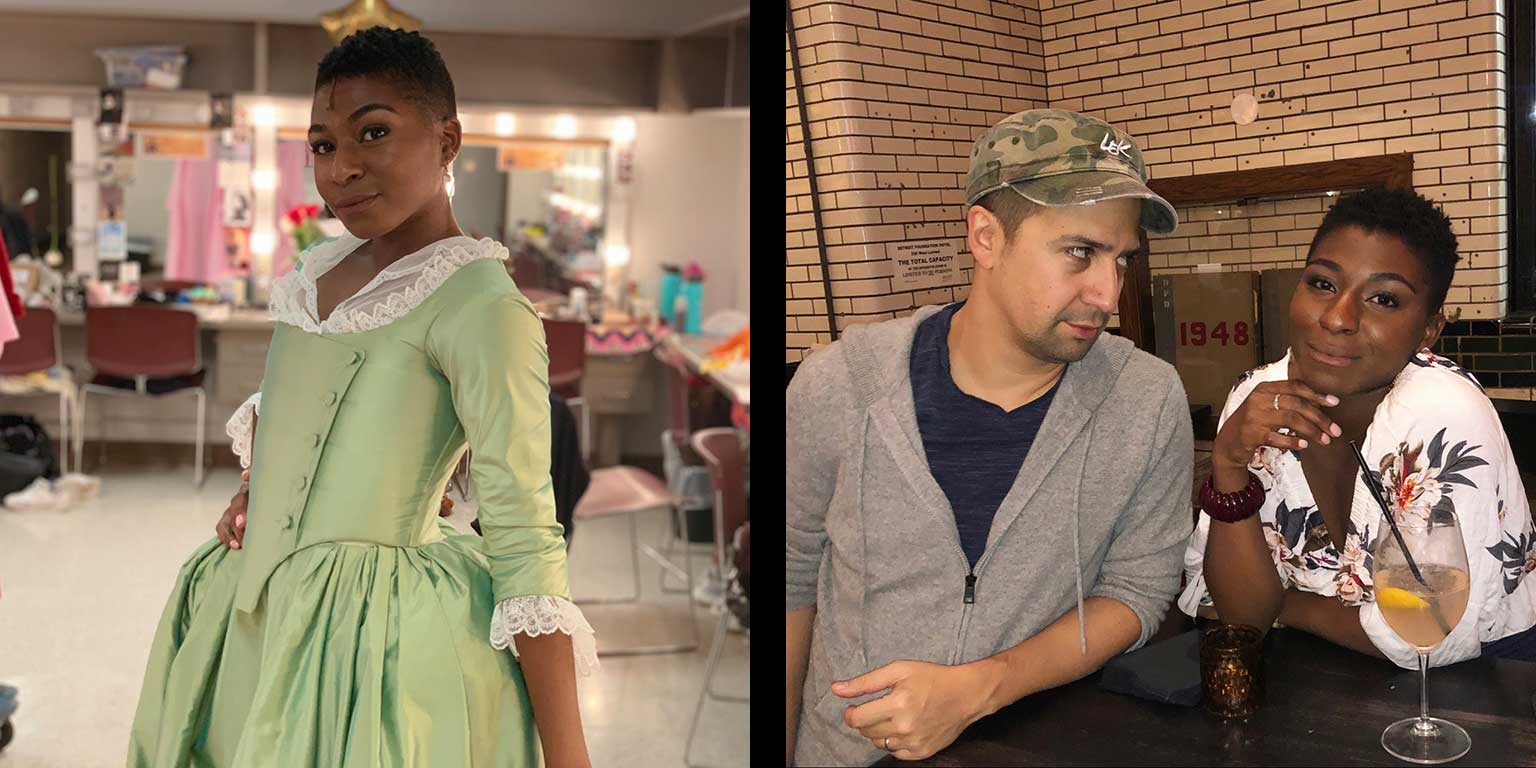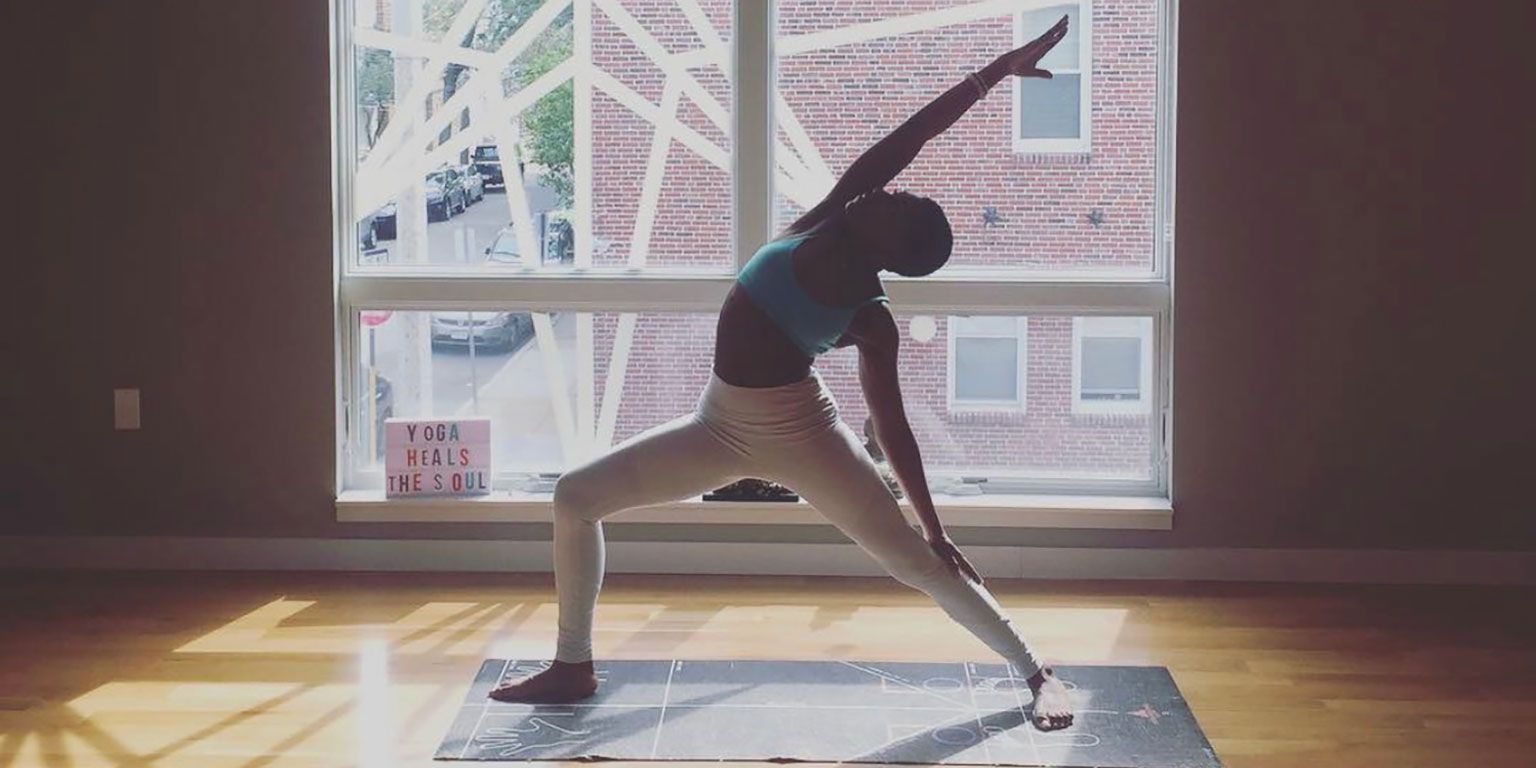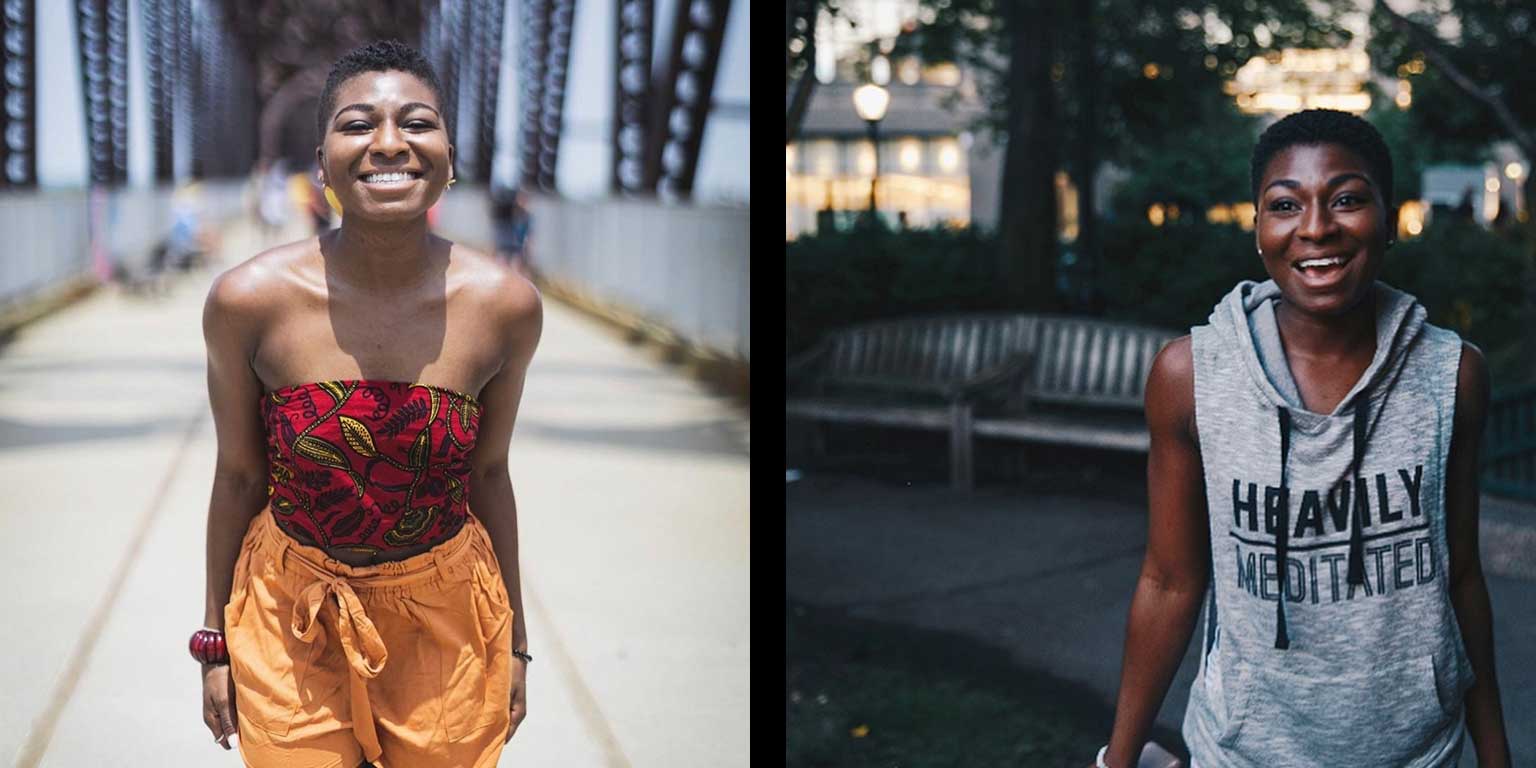By Elizabeth Hoover | Summer 2020
When I catch up with musical theatre actress Charnette Batey (B.F.A. ’12, Musical Theatre) during the COVID-19 lockdown, she’s giving her five-year-old French bulldog Fitzgerald a bath. After the production of Hamilton she was touring with came to a screeching halt, she’s signed a short-term lease to ride out the pandemic near her family in Lexington, Ky., instead of hunkering down in New York.
While many of her colleagues are scrambling to do Zoom read-throughs or broadcast remote versions of duets, Batey is taking a much-deserved break.
“There’s a temptation to feel guilty for not reading new plays or acting out scenes,” she says. “But I’m taking full advantage of this downtime. I have enough pressure when I’m doing shows and keeping up with auditions.”
She’s cultivated her ability to keep a calm, steady center in the midst of chaos over seven years of almost non-stop touring — first with Dream Girls, then in TheColor Purple, then The Book of Mormon, and now Hamilton. She attributes that equanimity, in part, to her mother.
“My mom’s always instilled in me that I can do something if I believe in it,” she says.
The key has been to maintain that perspective through difficult audition processes in an industry that, despite some advances, doesn’t offer abundant opportunities for Black women.
Batey was born in San Diego, where her parents were stationed in the navy. After her divorce, her mom wanted to be closer to family support, so she moved with Charnette and her two younger brothers to New Albany, Ind., a town of about 35,000 across the Ohio River from Louisville. There, Batey experienced “culture shock” in a multitude of ways.
“I could hear it in the way I spoke,” she remembers. “I could feel it in what I thought was cool.”
But the biggest change was that she went from an ethnically diverse city to being the only person of color in her class.
Despite the bumpy transition, the move proved fortuitous. New Albany High School has a well-funded and highly regarded musical theatre program. Batey discovered her passion after landing one of the lead roles in her school’s production of Aida, the story of a Nubian princess in love with her captor.
“We’re not a musical theatre family,” she explains, adding that one brother is in the military and the other is in medical school. “Singing was always ‘Charnette’s thing.’”






